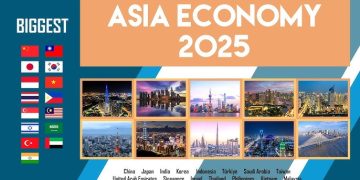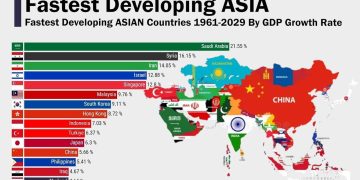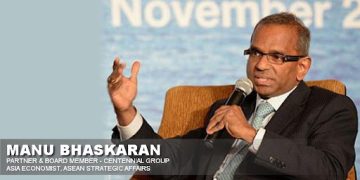1. Introduction: The Mirage of Stability
By late 2025, the global financial system appears deceptively calm.
Markets fluctuate within predictable bounds, major banks report stable earnings, and central banks have shifted from emergency rate hikes to cautious pauses.
But beneath this surface of moderation lies a dangerous illusion — a fragile order sustained by liquidity, not resilience.
Emilios Avgouleas, one of Europe’s most incisive thinkers on financial law and systemic risk, has long warned of this paradox.
In his analysis, the world’s post-2008 reforms created an architecture of compliance, not confidence — a system that obeys rules yet remains vulnerable to shocks.
Regulators learned to quantify risk, but not to contain interdependence.
The next crisis, Avgouleas argues, will not arise from the same instruments that broke the system before, but from the same institutional blindness that refuses to see how risk mutates under new incentives.
2. A Decade of Reforms — and Their Unintended Consequences
After the 2008 financial crisis, the global community embraced reform with religious zeal.
The Basel III framework, Dodd-Frank Act, and European Banking Union promised to rein in leverage, increase transparency, and prevent another Lehman moment.
Supervisory authorities multiplied, stress tests became ritual, and capital buffers swelled.
And yet — as Avgouleas notes — the architecture of financial globalization remains unchanged.
Risk has not disappeared; it has migrated.
• Shadow banking
Assets under management in the global non-bank financial sector surpassed $240 trillion in 2025 — roughly half of all financial assets worldwide.
Private equity, hedge funds, and family offices now serve as the true engines of leverage, often outside the perimeter of prudential regulation.
• Regulatory arbitrage
Each new rule produced new loopholes.
Derivatives once traded on opaque bilateral contracts now move through “central counterparties” (CCPs), but those CCPs themselves are systemically critical — the new too-big-to-fail.
• The illusion of safety
Capital ratios and liquidity requirements, while stricter, incentivize banks to offload risk rather than reduce it.
Financial safety has become a compliance metric, not an institutional mindset.
Avgouleas calls this phenomenon “the moral outsourcing of risk”: regulators feel safe because numbers look right, while markets feel safe because rules exist — yet neither truly understands the complexity they have created.
3. The Return of the State — and Its Limits
The crises of the 2020s — from the pandemic to inflation and war — have revived the role of the state in economic life.
Governments intervened with unprecedented fiscal stimulus, and central banks acted as universal backstops.
The result? A financialized welfare state, where stability depends on permanent intervention.
But Avgouleas sees danger in this dependency.
When monetary authorities become the guarantors of asset prices, market discipline evaporates.
Investors no longer price risk; they price policy response.
By 2025, this moral hazard has deepened.
The European Central Bank’s targeted bond purchases, the Federal Reserve’s reverse repo facilities, and China’s state-managed credit all sustain the illusion that finance is controllable.
But as Avgouleas argues, control is not resilience.
The deeper problem is political:
states have assumed responsibility for systemic safety without reforming the governance of finance.
Thus, public power protects private fragility — a paradox that can only end in another legitimacy crisis.
4. Financial Globalization Without Governance
Global finance in 2025 is hyper-connected yet under-governed.
Trillions of dollars move through algorithmic trading systems every second, across jurisdictions and asset classes, with no global authority capable of imposing coherence.
The Financial Stability Board (FSB), IMF, and Bank for International Settlements (BIS) coordinate in theory, but in practice, national interests dominate.
As Avgouleas writes, “The world has built a system of cooperation without accountability.”
Each nation guards its sovereignty in financial regulation, even as its institutions depend on cross-border liquidity.
The consequence is a regime of mutual exposure without mutual trust.
Recent crises — from the 2023 Credit Suisse collapse to the 2025 shadow liquidity crunch in Asian markets — revealed the limits of patchwork governance.
Without a global lender of last resort or uniform insolvency standards, the next shock could ricochet across continents before regulators even identify its origin.
5. Technological Acceleration and Systemic Complexity
Technology has transformed finance from an industry into an ecosystem.
AI-driven trading, decentralized finance (DeFi), and digital currencies have multiplied both efficiency and opacity.
Avgouleas argues that regulation has failed to keep pace with the algorithmic nature of modern risk.
• Algorithmic fragility
Machine learning systems amplify feedback loops.
A single market anomaly can trigger cascades across automated portfolios — as seen during the “flash crashes” of 2023 and 2024.
Unlike human traders, algorithms cannot exercise discretion; they only execute patterns.
• Decentralized finance (DeFi)
While hailed as democratizing finance, DeFi platforms have become new channels of contagion.
In 2025, over $80 billion was lost through protocol exploits, flash loans, and liquidity failures — most unregulated, often untraceable.

• Central Bank Digital Currencies (CBDCs)
Avgouleas views CBDCs as both a solution and a risk.
They promise transparency but concentrate power.
If adopted widely without democratic oversight, digital currencies could enable state surveillance of finance, undermining privacy and competition.
Technology, he insists, is not neutral.
Its architecture encodes power, and without institutional redesign, innovation will only magnify existing inequalities.
6. Europe’s Crossroads: From Regulatory Powerhouse to Strategic Actor
Europe once prided itself on being the “regulator of the world.”
Its General Data Protection Regulation (GDPR), MiFID, and ESG frameworks set global standards.
But in finance, this normative power has turned inward — producing compliance overload rather than strategic resilience.
Avgouleas argues that Europe must move beyond rule-writing toward systemic stewardship.
That means shifting focus from legal form to economic substance:
Are European institutions genuinely stable, or simply compliant?
Are markets serving social goals, or just obeying technical mandates?
The EU’s new Capital Markets Union (CMU) initiative, launched in 2024, aims to integrate fragmented national markets and deepen liquidity.
But without political unity, financial integration remains partial.
In Avgouleas’s words, “A currency union without fiscal union is like a bridge without foundation.”
Europe must decide whether it wants to be a safe harbor of rules or a center of innovation.
It cannot be both without reinventing how it governs finance.
7. The Moral Dimension: Finance as a Social Institution
What makes Avgouleas’s thought distinctive is his moral realism.
He refuses to treat finance as a purely technical domain.
To him, financial systems are social contracts — built on trust, legitimacy, and shared purpose.
When that trust erodes, no amount of liquidity can restore order.
The 2008 and 2023 crises, he notes, were not failures of math, but of ethics and governance.
A system that privatizes gains and socializes losses cannot sustain democratic legitimacy.
Hence his call for a new paradigm:
- Embed ethics within market design, not as an afterthought.
- Reimagine banks as public utilities, accountable to society.
- Build global coordination based on transparency, not secrecy.
Finance, in this view, must be reclaimed from technocracy and reoriented toward human welfare — the ultimate purpose of any economy.
8. Beyond Regulation: Toward a Resilient Financial Constitution
Avgouleas proposes the idea of a “Financial Constitution” — a set of binding global principles that define the limits of leverage, transparency, and accountability across jurisdictions.
Not a treaty of rules, but a framework of norms.
He envisions:
- An international bankruptcy regime for cross-border financial institutions.
- A global liquidity backstop, coordinated through the IMF.
- Democratic oversight of digital finance and algorithmic systems.
- Recognition of finance as a public good, not a private privilege.
Such ideas may sound utopian in 2025’s fragmented world, but as Avgouleas warns, “The absence of order is not freedom; it is fragility.”
Without constitutional thinking, financial globalization will remain a system that inherits every past mistake and amplifies every future one.
9. Conclusion: The Fragility of Confidence
Financial stability today is not the product of strength, but of collective faith — the belief that central banks will intervene, markets will rebound, and systems will self-correct.
But faith is not a foundation.
As Avgouleas writes, “Confidence is the most volatile of assets.”
When it breaks, rules and ratios mean little.
The challenge of 2025 is not to invent new regulations but to rediscover the purpose of regulation itself:
to make finance serve society, not itself.
The future of global finance will not depend on how fast it innovates, but on how deeply it remembers.
In a world of fragile order, the true measure of progress is not complexity — but conscience.






































